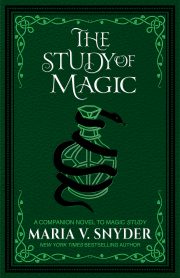Writing for Games: Introduction and a Few Misconceptions
by Monica Valentinelli
 Within the broad category of gaming there are card, board, tabletop roleplaying (TTRPG), dice, improvisation, live action (LARP), mobile, massive multi-roleplaying (MMORPG) and video games, in addition to interactive fiction (IF), play-by-post, RP’ing, and many other types. Some games use symbols or pictures for gameplay, while others are text-intensive and require anywhere from five thousand to five hundred thousand words or more.
Within the broad category of gaming there are card, board, tabletop roleplaying (TTRPG), dice, improvisation, live action (LARP), mobile, massive multi-roleplaying (MMORPG) and video games, in addition to interactive fiction (IF), play-by-post, RP’ing, and many other types. Some games use symbols or pictures for gameplay, while others are text-intensive and require anywhere from five thousand to five hundred thousand words or more.
Words are integral to game design and gameplay. The text produced, however, is contracted, assigned, and paid differently depending upon the type of game or company it’s for. Payment on the back end varies widely and, outside of tabletop RPGs, writers don’t always earn a per word rate for any number of reasons ranging from budgeting to rights. For example, a card game designer might receive a royalty on every copy sold as opposed to a per word rate on the initial card text. As another, a video game writer could be hired on a contractual basis for a specific game, and their hourly rate might be determined by the company’s budget for production.
Though there are commonalities that game writers share in their work, there are a lot of routes they can take in order to work in the industry. This column will shed a light on some of those aspects to show what it is game writers do in these varied forms.
To lay the foundation for my future columns, I want to address the argument that the setting and rules can be easily separated. Then, I’ll highlight a few myths about the industry to clear up some misconceptions.
Setting vs. Rules
When I first started back in 2006, I heard fans use the words “fluff” to describe the game’s setting and “crunch” for the rules(1) when referring to games like Dungeons & Dragons, Traveller, GURPS, etc. Over time, I’ve seen how the usage of these words relates to how some players/GMs feel that the “fluff” isn’t as important as the system and can be safely ignored. Unfortunately, this idea often leads to the mistaken assumption that the rules and setting are not weighted equally in terms of importance or need for quality. Even then, the idea that there’s a clear separation between the two doesn’t neatly apply because certain aspects of the rules are text to describe an action, like feats in D&D, or to further expand both the setting and rules like the philosophies outlining a vampire’s morality in the Paths of Humanity for Vampire: The Masquerade.
As you can imagine, this discussion quickly becomes more complicated with respect to story-centric games such as The Dresden Files RPG, Firefly RPG, Brandon Sanderson’s Mistborn RPG, Apocalypse World, and Fiasco. Story games take a more integrated approach to the rules and the setting, because the rules are considered to be pieces of the setting designed to influence or impact the story. Instead of a stat block filled with numbers, for example, the rules might be presented as a page of character traits or abilities that are woven throughout the text. Games, like all creative mediums, are also not static and their development and presentation adapts, evolves, and changes over time as well. So, what might have been applicable ten or twenty years ago doesn’t necessarily fit now, despite the fact that words like “fluff” and “crunch” are still used broadly.
Other text-heavy games, like IF(2) games, also incorporate rules into the selection or choices and don’t use traditional stat blocks, either. For this type of game, rules and setting would be even harder to separate. Of course, the setting vs. rules discussion changes again with respect to all other games (board, card, mobile, MMORPG, video, etc.) where there are more nuances and processes at work for development and production. Gloom, for example, has flavor text on every card that complements the action applied to a character, but the card’s action is also setting-appropriate for this Victorianesque card game(3).
I’ll get into team/company structures and individual roles in a later column, but my point here is simply this: asking writers to subtract out the rules portion of their text doesn’t match the reality of game production. The “strip” is something that often happens independently of game production after the game is produced—unless a writer was specifically hired to work only on setting which, again, isn’t always the case. Take out the setting, and all you have is a pile of rules; without the rules, you typically have a world and characters. Games require both in order to be considered a game.
Other Misconceptions
The gaming industry, like comics, fiction, television, film, etc, is plagued by its fair share of misconceptions and stereotypes. When I was preparing for this post I asked for some input from other writers, and many of the myths they mentioned were due to misperceptions about demographics(4) and the idea that games are for people who are immature, have poor social skills, or only have time to burn.
The entrenched ideas about games and the people who play them often originate from cultural zeitgeist. The word “gamer” carries a specific connotation, for example, and the negativity surrounding it leads to game enthusiasts feeling embarrassed when they’re called one. So, they avoid identifying as a gamer because of that unwanted reaction, even though are many different types of gamers ranging from avid enthusiasts to casual players who only play once a month or year. When coupled with the vitriol companies like Bioware have been getting online for producing games with better, more representative characters, many players are put off by the harassment and abandon the hobby, play in isolation, or don’t identify as a gamer.
Anticipating toxicity, some aspiring game designers then abandon their goals because they feel they’re not supported or welcomed by non-gamers and gamers alike. Though it is absolutely true that communities have problems, the fact is that the vocal aggressors do not speak for or represent anybody but themselves. The outspoken minority is one, tiny segment of a multi-billion dollar industry with hundreds of communities that are constantly growing and evolving. Unfortunately, many game writers/designers/developers (myself included), do not have the bandwidth to regularly visit forums, Reddit, etc. and discuss games in addition to writing new games, which has furthered the belief there is a single,gaming community—which is flatly untrue. Add the cost of attending game or multi-media conventions into the mix, which prohibits some fans from attending them, and it’s easy to see how lazy stereotypes flourish(5).
If you have assumptions about games or want to get your start in game writing, I encourage you to ask questions and reach out to multiple people. Often, the answers you might get will depend upon who you talk to and what role that person has in the gaming industry (e.g. fan, writer, editor, developer, designer, artist, publisher, etc.) and, more importantly, when they filled those shoes. If you can, talk to a game developer or someone experienced in the medium you’re curious about. We are accessible online and many of us are happy to help if we have time.
Lastly, you can always ask questions in the comments below, too. If I don’t know the answer myself, I can reach out to my peers and quote them in an upcoming column.
With that in mind, I hope you enjoyed the kickoff to this column about writing for games. Until next time!
•••
(1) On the teams I lead, I call the rules the “engine” of a game, because they are what make the game go. The setting, then, is the “vehicle”.
(2) Choice of Games, which is SFWA-eligible, produces IF or interactive fiction games.
(3) If you’re interested, I wrote about Gloom for Family Games: The 100 Best. You can also check it out on the Atlas Games’s website here: http://www.atlas-games.com/gloom/
(4) By far, the stereotype of the young, unemployed man playing video games all day is the most common. It is so prevalent, even amongst gamers, that developers and writers often experience pushback when designing characters and games to be more inclusive. Link: http://www.polygon.com/2016/4/29/11539102/gaming-stats-2016-esa-essential-facts and link: http://www.pewinternet.org/2015/12/15/who-plays-video-games-and-identifies-as-a-gamer/
(5) There is also a stereotype that gamers don’t read. Many TTRPG players/GMs are voracious readers and are huge fans of science fiction and fantasy writers.
•••
Monica Valentinelli writes stories, games, essays, and comics for media/tie-in properties and her original works from her studio in the Midwest. She’s a former musician of 20+ years and a graduate of the University of Wisconsin-Madison’s Creative Writing program who now writes full-time. Best known for her work in games, Monica is currently the developer for Hunter: the Vigil Second Edition, and was the lead developer/writer for the Firefly RPG line based on the Firefly TV show by Joss Whedon. Her new book The Gorramn Shiniest Dictionary and Language Guide in the ’Verse recently debuted from Titan Books. Watch for her co-edited anthology Upside Down: Inverted Tropes in Storytelling to debut from Apex Book Company in December 2016.


